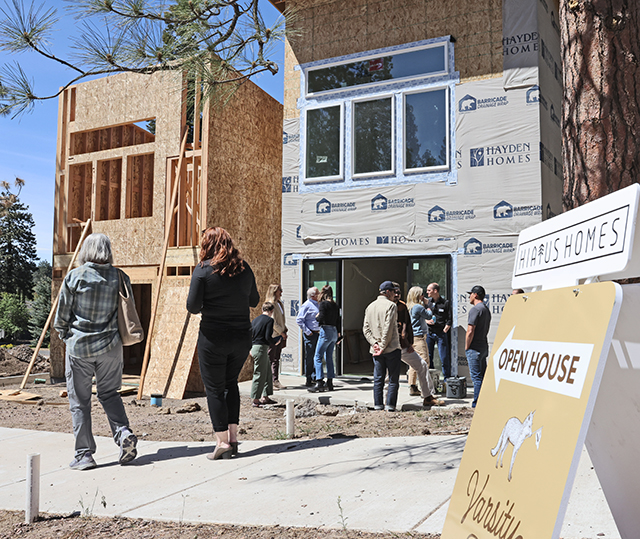Just like homes, our landscapes need renovating
Published 12:00 am Tuesday, July 8, 2014
Your landscape is very much like your home’s interior decor.
It grows old, sometimes tattered and torn, and needs updating from time to time. Sometimes, plantings need to be completely torn out and replaced. Sometimes, old porches, patios and decks just don’t work any longer.
Landscape design classes typically teach that a landscape lasts for 10 to 15 years before it needs at least a partial redo. Sometimes, it’s best to start over from scratch and get the look you’ve always wanted and never achieved because there was never enough planning or an overall plan.
Landscape designers agree.
“When I started my business 21 years ago, there was a housing boom in Williamsburg, Virginia, and the bulk of my business was landscapes for new construction,” says Peggy Krapf of Heart’s Ease Landscape & Garden Design (www.HeartsEaseLandscape.com) and a certified designer through the Virginia Society of Landscape Designers (www.vsld.org).
“As time passed it has now become primarily renovating old, existing landscapes.”
What goes wrong
Most landscapes need renovation for one of the following reasons, according to Krapf:
Poor initial design, which becomes more obvious as years progress (wrong plants in wrong places).
Bad workmanship and poorly chosen hardscaping/materials that don’t stand the test of time.
Old age of plants and bad or improper regular pruning through the years.
New owners who have different landscape taste or style.
“I tell my clients that if it is time to renovate the inside of the house, it is probably time to renovate the outside,” she says.
“Once a landscape reaches the 12- to 15-year point, many plants have outgrown their spaces or reached the end of their lifespans. Trees should live many years and should be in places where they have room to grow to their mature sizes. Nothing is sadder than beautiful trees, just reaching their maturity, that need to be removed because they were not planted in the right place to begin with.”
Renovating a landscape can be tricky, continues Krapf.
Sometimes it is necessary to remove all of the plants and begin fresh. Other times some plants can be left in place and pruned or reshaped and mixed with new plants.
“When mixing new with old, I try to purchase larger-sized new plants so there is less contrast between new and old,” she says.
Some shrubs can be rejuvenated — cut back hard to remove old growth and stimulate new, younger growth. Many deciduous plants and evergreens, such as Japanese hollies, boxwoods and Chinese hollies, can be cut back hard in early spring, and they will grow back and be serviceable for many more years. Overgrown evergreens can sometimes be “limbed up” into tree forms to give them new life. Valuable plants can be transplanted to other locations where they have more room to continue to grow.
“I have several clients with beautiful landscapes that are 15 or more years old,” she says.
“Regular maintenance and pruning make all the difference.
“An analogy I often use is with children — if you discipline and train them from the time they are young they will generally turn out the way you hoped they would. If you let them become wild with little direction, they get permanently out of control.”
At Smithfield Gardens in Smithfield, Virginia, horticulturists Ann Weber and Jeffrey Williamson encourage homeowners to pay attention to the information on plant tags before buying pieces that will outgrow their spaces, and cause crowding problems sooner than necessary.
“Shrubs never pay attention to their tags, so a plant may end up being a little larger than you thought,” says Williamson. “Some maintenance pruning may be necessary, but most gardeners can handle it. No landscape is ever maintenance-free.”
Planning your time
Eric Bailey of Landscapes by Eric Bailey in Yorktown, Virginia, agrees you need to allot time for any yard.
“Make sure you have the time and resources to maintain your landscape,” he says.
“I would say four hours a week depending on the size of your landscape.”
To keep your expectations realistic, Bailey recommends you “plan, plan, plan” your landscape, choosing the right plants for the right places. For example, don’t plant a white-flowering Natchez crape myrtle that grows 30 feet tall when you have a place that should accommodate an 8-foot-tall plant.
“If plants are selected for the correct sun/shade exposure and planted according to their ultimate size, in three to five years you will have a full lush landscape without overcrowding or the need for excessive trimming or pruning,” adds Tish Llaneza of Countryside Gardens in Hampton, Virginia (www.countrysidegardens.biz).






